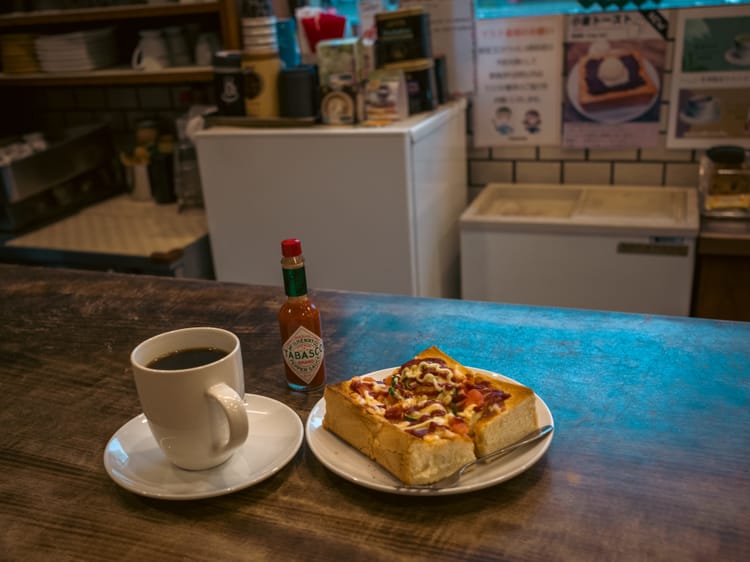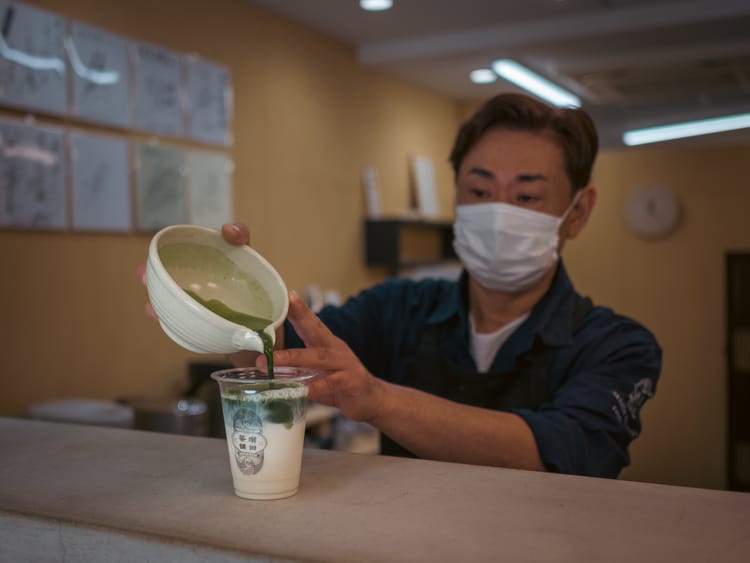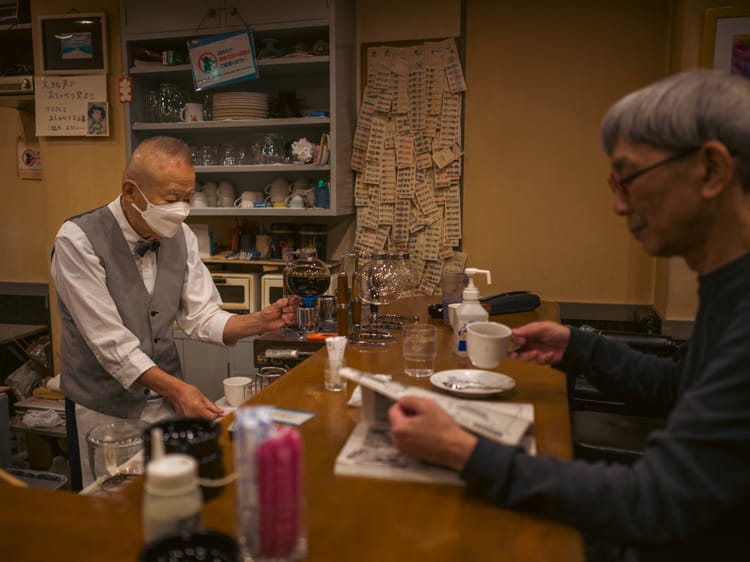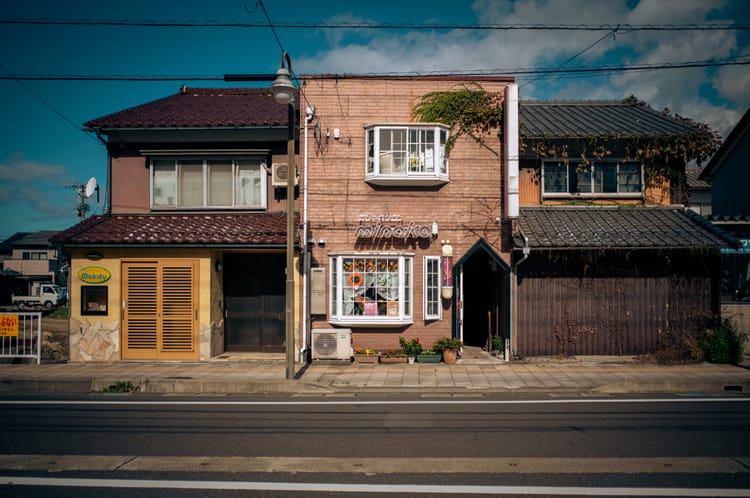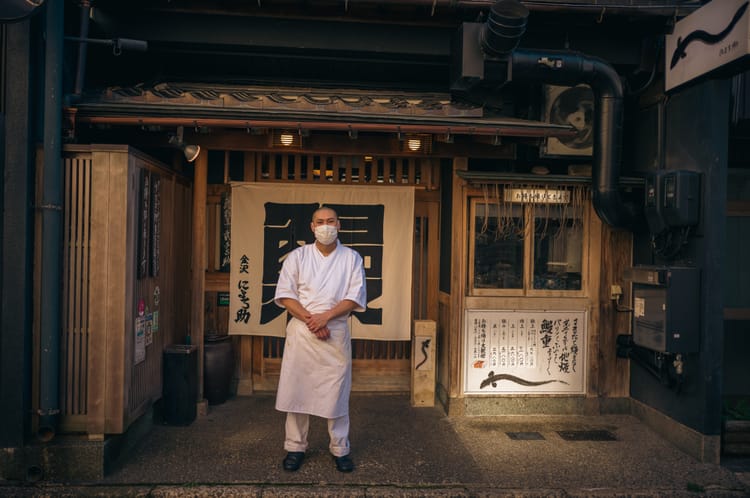Season Finale
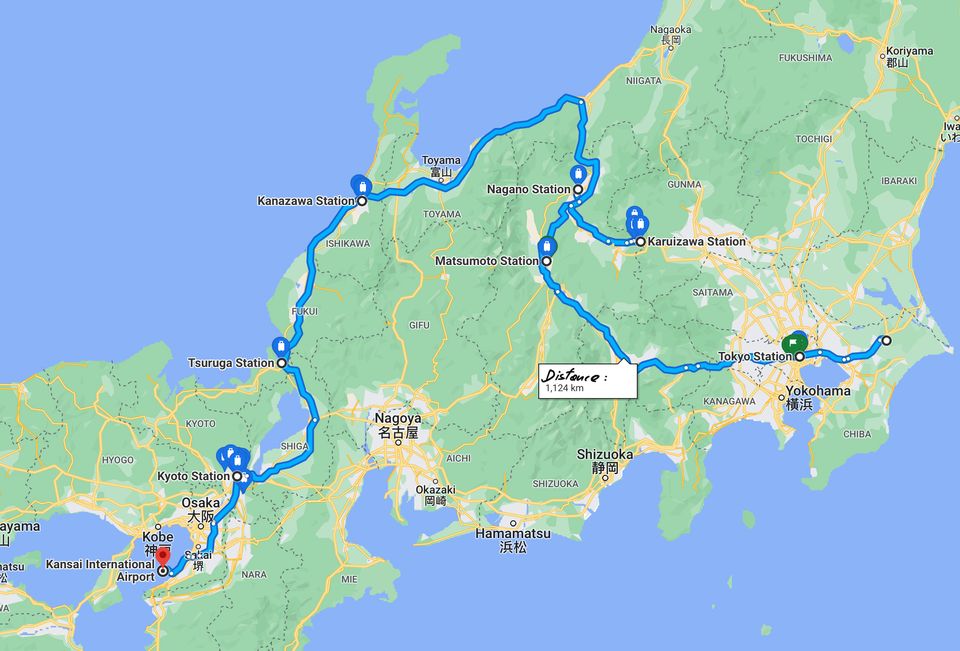
Day 14
Hong Kong, 2,461 steps, 2.1 kilometers
Always always always plan for at least one rest day at home after a trip. Don’t jump back to work right after you return. The comfort of that one “buffer” day is impossible to overestimate.
Especially if it was a long and/or physically taxing trip. This one was both.
And to be honest, I should’ve planned for at least two days of rest and recovery. But capitalism calls…
310,250 steps, 253.2 kilometers
I hadn’t planned for this much walking. My goal was to beat 10 kilometers each day — so I expected to finish this trip with somewhere around 150 km.
A peculiar pattern emerged. Every night I went to bed completely spent. Used up. Come morning, legs wanted to move again. First few kilometers felt like I was gliding. Almost effortless. The body was longing for traversal.
It's all done now. And it feels good. It feels like an accomplishment.
But of course, it’s not just about the distance. It’s about the things I’ve seen and been able to appreciate (by the virtue of passing by them s l o w l y, not just giving them a brief glimpse from a window of a taxi). And it’s about the people I was able to meet and talk with. Yeah, cliche as it sounds — the real treasure was the friends I made along the way.
Well, “friends” is overselling it — but I’m so grateful for each piece of human connection, however small, I was able to make across these 13 days. For all the openness and kindness I experienced from day one. Profound.
4 pizza toasts, countless coffees, teas, meals, and snacks
And the food, how can I not mention the food (and everything food-related)!
I mean, kissa coffee is its own thing. I knew what to expect. But I also had some divine cups along the way. Pour-over Honduras at Weekenders Coffee in Kyoto was definitely a highlight. Tea-like flavor, almost as if it was a gesha varietal. But it wasn't! Very enjoyable.
Most of the time I ate at low-to-medium-priced places. With a couple exceptions.
Each meal so memorable. Kaiseki dinner at Hoshinoya Karuizawa, omakase sushi set at Sushiiwa Kyoto, akitendon at Dontoya (worth an extra stop in itself), omakase tempura at Sakui, and the godly bowl of ramen at Menshu Takenaka.
Each city, however small, having so much to offer. I walked the hell out of some of them and yet, it still feels I’ve only scratched the surface.
But it’s good. A trip like that should make you feel wanting more. You should leave each city before you overstay your welcome.
And the pizza toast? I can’t say I have reached Craig Mod’s level of worship for it, but I will certainly miss it. Thank goodness we can have pizza toast at home.
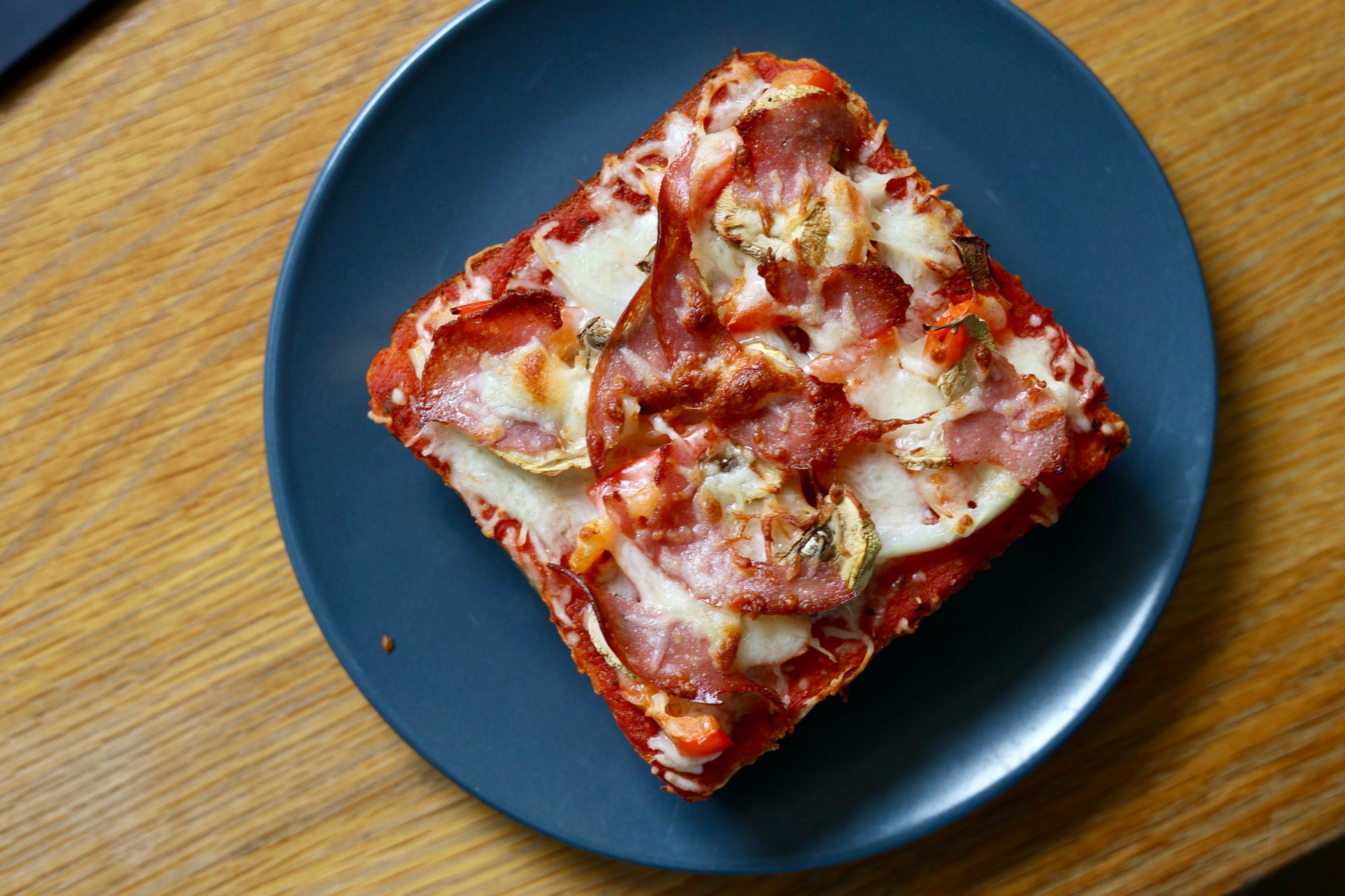
8,584 words, 2,102 shutter clicks
I am truly proud of the creative rigor I imposed onto myself. Like, I know it’s not a lot of output if you just look at the numbers. A few hundred words and less than a dozen pictures published each evening — I’ve seen single blog posts amounting to more than this newsletter's grand total.
But making myself comb through 100-200 pictures, cull them, edit the selected ones, and weave a short story around them every evening was no small thing. It was test of willpower and discipline I had to pass every night. And to pass it, sacrifices big and small had to be made every night (no evening YouTube for you, Chris).
And I’m so happy I did it! Even if just a handful of people read it, it was worth it. It made me make something again. Put something (and myself) out there.
Having this newsletter and these pictures will make my memories of this trip richer, I’m sure of it.
1 backpack, 1 camera, 1 lens
What made it all work, and made it all possible, was my commitment to one bag travel. Just me and one backpack. Every piece of clothing, every piece of gear had to fit in there or in my pockets.
What an exercise in trimming everything down to just the essentials. And what freedom and flexibility (unexpected stops, day trips) it enables!
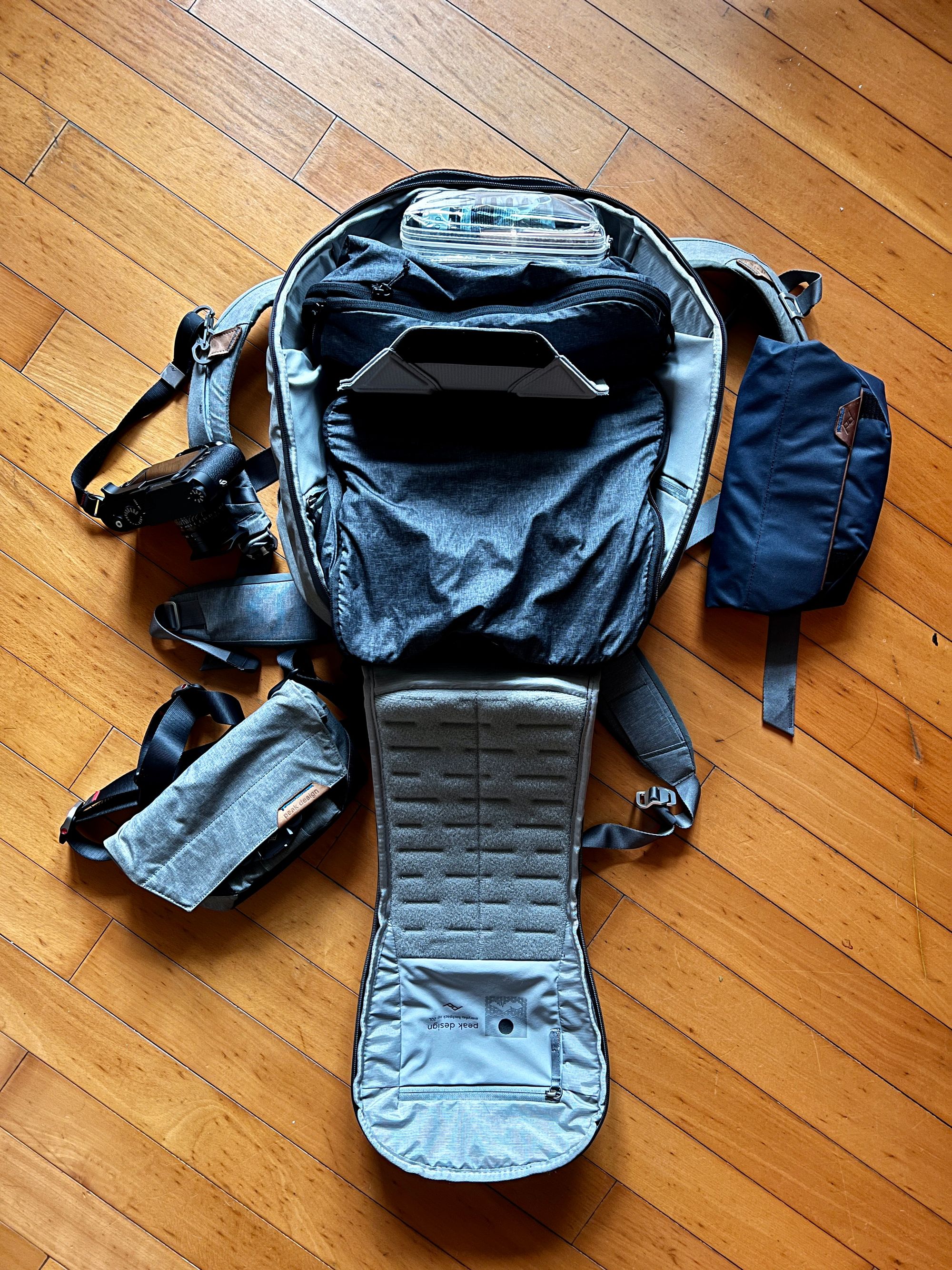
Packing solutions
The core packing solution was my Peak Design Everyday Backpack Zip 20L. Inside — one of each: medium (for clothes) and small (underwear) packing cube. Early into the trip, a small dopp kit fit inside as well — later to be replaced with a bag of souvenirs.
Side pockets — filled with the dopp kit on one side, and a Field Pouch (holding cables and chargers and other miscellany) one the other.
On the left shoulder strap, a small karabiner with Peak Design Cuff attached to it and a Capture Clip — that’s where I would stow my camera.
And the last minute purchase — the Everyday Hip Belt I got in Ginza on my second day. Transformative. Took some weight off my shoulders and that has contributed to my travel and walking comfort tremendously.
The point was to make it all modular. I get to the hotel, I take the packing cubes and pouches out — and the backpack transforms from a travel pack to a daypack. Easy and quick.
Apart from that, I had another Field Pouch with a strap and Capture Clip that served as a sling back on lighter days (or days with more predictable weather) and as an extra personal item for flights.
Clothes
Two Outlier t-shirts, two Arc’teryx t-shirts, Arc’teryx long sleeve, Mont-bell long sleeve, Outlier pants, Suitsupply “traveler” shirt (for "work" day in Tokyo), Arc’teryx Sigma pants, Underarmour Storm Jacket, Y3 zip-up hoodie, merino underwear.
It worked magnificently. I’m an Arc’teryx believer from here on out. (Outlier less so.) This kit has gotten me through a highly variable Japan autumn weather. Temperatures ranged from 1° to mid-20s Celsius. Conditions from drizzle, to rain, to all out sun.
With only so many changes of clothes I was able to pack, I had to account for at least one laundry run in the middle of the trip. I packed a laundry detergent and made sure all my clothes were fast-drying.
Camera
Leica M11 with Summicron 28 mm. A perfect travel companion. Limiting myself to just one lens, and it being a 28 mm focal length, made it feel almost like a Q2. But I do appreciate the flexibility in changing the lenses back at home (my go-to is 50 mm Summilux), the USB-C port, and the opportunity to learn how to operate a rangefinder.
This was my first trip with this camera. And I have to say, I took some of my favorite pictures ever in the past two weeks. Are they my best pictures? On a technical level, likely not — some are slightly out of focus (very easy error to make with this sensor), for some I was too slow to capture the right moment, and some do show my slight discomfort with lens this wide.
But the memories those pictures carry — priceless.
All of the photos in this series (except for the ones in this single post) were taken with that kit. Most of the time shot wide-open at ƒ/2. All edited in mobile Lightroom (with maybe a handful receiving one extra touch-up in Apple’s Photos app).
The camera itself and the experience of using it deserve a separate article (Leica M11 Field Test?). It’s not without flaws — some being intentional limitations you might want to impose onto yourself (limitations breed creativity, after all), others just being small annoyances — but overall, I loved it.
Computing & accessories
My main computing device was the latest iPad mini (2021) — combined with Microsoft’s Foldable Keyboard (my favorite mobile typing experience, sadly — discontinued), and Apple Pencil 2nd gen.
Worked flawlessly for editing photos in mobile Lightroom, writing up the newsletters in iA Writer, reading books and watching Andor and Peripheral on the flights and train rides. It’s perfect for travel. Not too big, super-light, modular, competent, fast.
When out and about — iPhone 13 Pro + Apple/Google Maps + Apple Watch Series 8 (Apple Maps on the Watch was a great help on my walks).
AirPods Pro, chargers, MagSafe battery pack, and necessary cables.
No need for anything more.
Miscellaneous
Prescription medicine, COVID tests, lens cleaning tissues, hand cream, shaver, dopp kit, laundry detergent, neck buff, extra camera battery (not used once), SD card reader dongle, Allen key, and a few more bits and bobs I’m now forgetting.
And that’s my entire packing list. Like I said — just the essentials. Most importantly, nothing from this list failed on me. Everything performed as expected.
Prioritize reliability and you’ll be fine.
Prep work
I did not over-prepare. I don’t think? Though my wife mercilessly mocked me for trial-packing a week in advance. So I don’t know. You tell me.
The most important piece of preparation was to figure out the logistics. The flights (including making a decision where to start the trip and where to end it — am I making a loop or an point A-to-B kind of trip?), the cities along the way and how they connect (are there convenient train connections? what kind of JR pass would I need, if any at all?), and hotels in each city. This part also included double-checking COVID-related restrictions on the way out and the way back.
Second most important part was deciding how and what to pack. The result you’ve probably already read above. This covered researching the weather and watching and re-watching Craig Mod’s packing livestreams. And ultimately buying the missing pieces of gear (which turned out to be a lot).
And lastly — researching what to see and where to go in each city. Tiny Barber, Post Office newsletters for Matsumoto and Tsuruga were extremely helpful with that. But I marked maybe two or three key places in each city, not more. Left everything else to serendipity and luck (of which I apparently ran out in Kyoto, but it was fun nonetheless).
And what about the language? Yeah, the language barrier was there. Most of the conversation I had were superficial, an awkward mix of clunky English and Japanese, with some almost entirely through Google Translate.
But you definitely can make this trip without knowing any Japanese (I mean, at least learn some basic pleasantries). You just need to accept (concede?) that you will miss out on some things, lack some context, won’t be able to go deep enough. But it’s still going to be a fantastic experience. Don’t let the language stop you.
Acknowledgements
Let me thank three people who made this trip and this newsletter possible.
- My wife, Ingrid. She entertained my idea of a solo trip and let me go with it. Encouraged it, even. We’re taking turns traveling – one person always has to stay back and take care of our CKD cat. And our cat is a lot of work. I'm not exaggerating. Ingrid, I appreciate your effort so much.
- Craig Mod. For basically handing me a blueprint for this trip and this newsletter. Heaps of advice. Packing livestreams, walk livestreams, walk newsletters, books, travel-to-Japan tips, and more. Read and re-read and multiple times over.
- Miłosz Bolechowski. For prompting me to write the first entry and encouraging me with kind words along the way.
Thank you for all the support and encouragement. Thank you thank you thank you.
What’s next
So that concludes this trip. Season one. The Hokuriku Arch. I will keep this site and this newsletter alive — let's say the show has been renewed for the second season. No release date yet, though.
There might be quick intermissions, short notes, I’ll send out from here from time to time. You can also find me on Instagram and Twitter.
Thank you for following along.
— Chris
